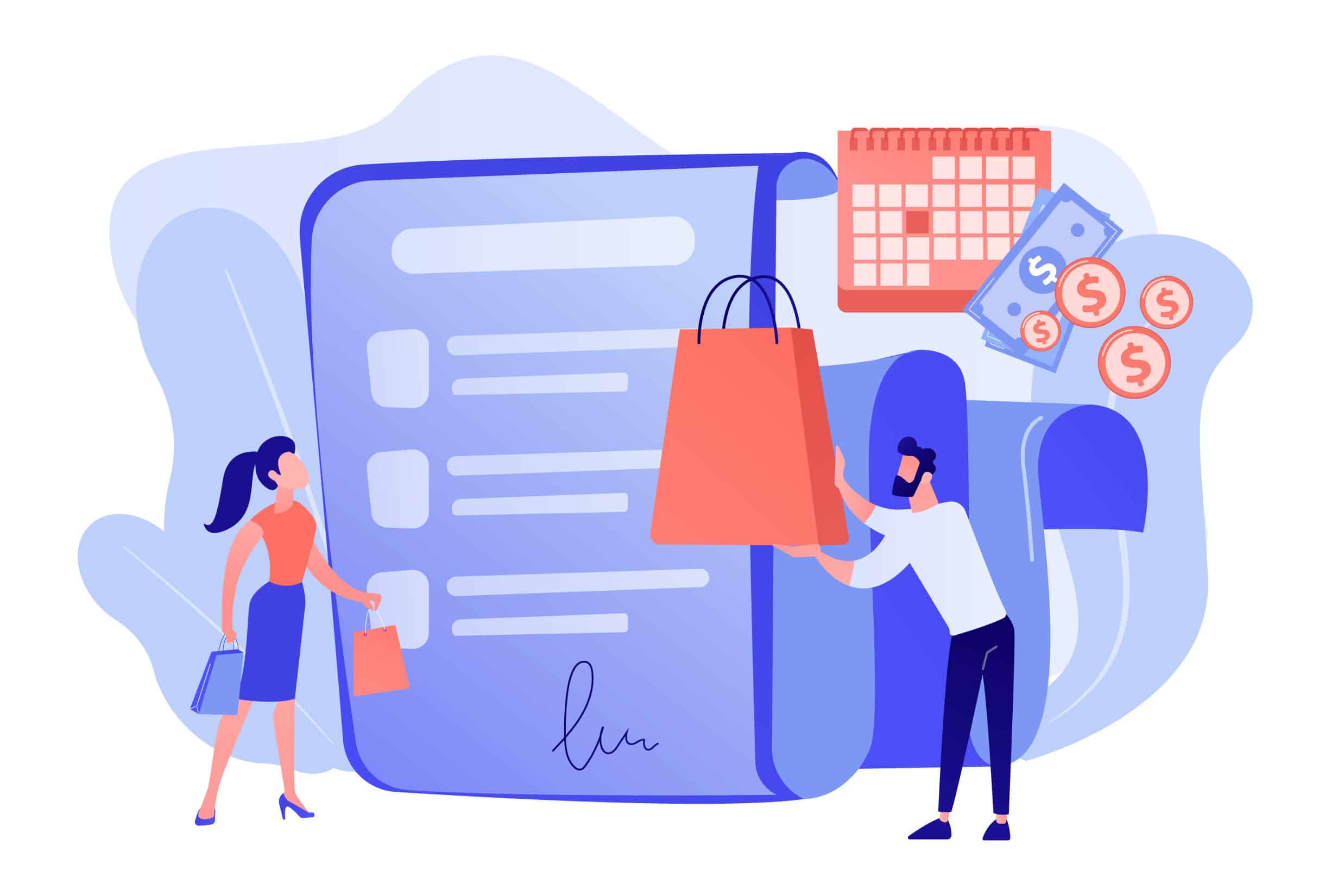
If you’ve shopped online recently, you’ve probably noticed an increase in financing options being offered at checkout. An increasingly popular option, “Buy Now, Pay Later” (BNPL) services offer instant short-term loans at point-of-sale (POS), often without interest or late fees. While installment payment plans have been around for centuries, tech-enabled POS lending has become one of the biggest payment trends of recent years. Since 2019, there have been significant developments in the BNPL space, including worldwide user growth, prominent provider acquisitions, and lofty valuations of companies in this space. To stand out in a competitive market, BNPL providers have expanded beyond retail and are widening their scope outside of POS payments. However, recent market downturns and increased calls for regulation will impact the future of BNPL lending. Innovative solutions that can balance regulatory oversight without sacrificing convenience will shape the future of short-term financing.
The Rise of BNPL
The ecommerce market experienced rapid growth during COVID-19 lockdowns in 2020 and 2021. As online shopping grew, so did the demand for alternative methods of payment. Though some of the first BNPL providers offered POS financing as early as 2012, the pandemic helped these services gain a huge influx of new users in a very short amount of time. According to a survey by the Ascent, between summer 2020 and spring 2021, the number of Americans who used BNPL services jumped from 37% to 55%—an increase of nearly 50% in less than a year. Among those who have used BNPL, most consumers listed their reason for using the service was to save cash in case of an emergency. By splitting the cost into smaller installments, shoppers feel their purchases are more affordable, and BNPL allows them to hold onto cash while avoiding longer-term ongoing debt.
BNPL services appeal to shoppers across all demographics, but are especially popular among Millennials and Gen Z consumers as easy alternatives to traditional lines of credit. Young shoppers who haven’t had the opportunity to build their credit scores yet can feel financially empowered while avoiding interest and fees. Because BNPL loans are only applied to individual transactions, they feel like less of a commitment than credit cards, which can carry balances and incur interest indefinitely. Notably, BNPL services aren’t exclusively popular among consumers with low credit scores; according to data from McKinsey, around 65% of BNPL receivables are from consumers with credit scores higher than 700.
It’s not just shoppers who love BNPL financing. Merchants who integrate BNPL services love its impact on conversion rates and shopping cart size—55% of consumers report spending more when using a short-term financing service than they would otherwise. The number of recurring users is also very high; according to data from the Strawhecker Group, 85% of shoppers who have used BNPL services plan to use them again in the future. Despite the recent market volatility for BNPL, integration across shopping platforms and transaction volume is expected to continue growing steadily. Insider Intelligence estimates that BNPL is on track to reach $680 billion in worldwide transaction volume by 2025, up from the $285 billion the industry recorded in 2018.
How BNPL Works
While not all BNPL programs are the same, most services follow the same basic model. Direct BNPL providers, such as Klarna, Affirm, and Afterpay, partner with merchants and facilitators to integrate their solutions at POS. At these participating retailers, customers can opt to pay for a percentage of the purchase at checkout—for example, 25% of the total cost—and then pay the remaining amount in a series of installments. Payment plans are meant to align with paycheck schedules, and typically consist of three to six short-term installments due over several weeks or months. The lenders pay retailers up front for purchases and assume all financial risk of the loans. BNPL providers charge their partnered merchants transaction fees ranging from 2-7% of the purchase cost, and some companies charge additional fixed fees.
Currently, most BNPL lenders only perform soft credit checks, so financing is an instant and seamless part of the checkout process. Because there are no hard credit checks, users don’t have to worry about BNPL purchases impacting their credit scores—as long as payments are made on time. Many BNPL providers do not charge interest or late fees, but multiple missed payments can block borrowers from further purchases on the platform or send their balances to debt collectors.
SEE IT IN ACTION: Certegy is one of the leaders in digital payment processing in the United States. Sourcetoad expanded Certegy’s functionality by building an API and payments interface for the company, including a Buy Now, Pay Later feature.
Expansion Across Industries
To differentiate themselves in a competitive landscape, BNPL companies are expanding their services outside of pure finance offerings. Some of the leading BNPL providers such as Affirm, PayPal, and Klarna have launched super apps, which are fully-integrated, end-to-end hubs that cater to the customer throughout the entire purchase journey. Super apps unite shopping, financing, payments, and customer support—all contained within the same app. Customers shopping through super apps have personalized shopping recommendations, sales and deals, order tracking, and one-click purchasing and financing power at their fingertips, without ever having to switch between apps. Some super apps, such as Klarna’s, even allow shoppers to use their financing options at any online store, regardless if the retailer is partnered with Klarna. Super apps give BNPL services wider reach to customers who are seeking fully-integrated shopping destinations rather than standalone financing services.
BNPL companies are also expanding their scope beyond retail. In the travel and hospitality industry, Klarna has partnered with Expedia Group to give customers the opportunity to “travel now, pay later.” American Airlines has also partnered with Affirm, allowing travelers to “fly now, pay later” with the option to split the cost of flights into 4 interest-free payments. As with online retail spending, consumers are more likely to book travel if given the option to pay for the trip over time without interest. This can make vacations seem much more attainable for consumers that may have been hesitant to pay for an expensive flight ticket or hotel room in full.
In the medical space, several BNPL companies have partnered with healthcare providers to give patients the option to breakup medical bills into monthly installments at point-of-sale. In 2020, PrimaHealth Credit became one of the first BNPL providers to offer POS lending for elective medical procedures, such as dental work, orthodontics, or LASIK. PrimaHealth Credit has a high approval rate for loans—up to 90%—but borrowers may have to pay interest depending on their credit status. Startup Walnut joined the competition in 2021, and the company differentiates itself by offering payment plans for medical costs at point-of-sale, with the added promise of no interest or hidden fees. While CareCredit has specialized in offering healthcare financing plans for years, it has the downside of functioning more like a traditional credit card, with penalties and high interest rates if a payment is missed.
Stay tuned for Part 2 of our discussion of BNPL, where we consider the impacts impending regulation may have on the future of short-term financing.
What consumers expect from their financial institutions can change rapidly, so it’s vital for companies to invest in digital innovation to remain competitive. Sourcetoad has designed and built bank payment processing applications, payroll management systems, accounting tools, business intelligence applications for investment banks, and a variety of other fintech solutions for forward-thinking financial services firms.
If you have questions about building custom software for your organization, reach out to schedule a 30- or 60-minute call. We’d love to introduce ourselves, learn about your needs, and hear how we can help turn your idea into reality.


